
|
CS 696 Emerging Technologies: Java Distributed Computing
Spring Semester, 1999
Networks
|
|
|
|
Lecture Notes Index
Next
© 1999, All Rights Reserved, SDSU & Roger Whitney
San Diego State University -- This page last updated 25-Jan-99
|
|
Contents of Doc 1, Networks
References
Communication
Networks: A First Course
by Jean Walrand, 1991, chapters 2 - 4, 6, 7
Unix
Network Programming
by
W. Richard Stevens, 1990, selected pages
Internetworking
with TCP/IP Volume 1 Principles, Protocols, and Architecture
,
Third Edition, by Douglas E. Comer, selected pages
RFC
1700, Assigned Numbers by J.Postel
Pattern-Oriented
Software Architecture: A System of Patterns
,
by Buschmann, Meunier, Rohnert, Sommerlad, Stal, 1996, pages 31-52
Networks
Point-to-point
- Dedicated
link between two computers
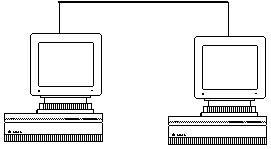
Communication
Network
- A
set of communication nodes that are interconnected to permit the exchange of
information

StringNet
Information
transferred to medium
Network
Protocols - handshaking
Duplex
Store
and forward
Flow
control
Routing
How
Information is Transmitted in a Network
Information
is transformed into electrical or optical signals
All
signals are corrupted during transmission
Transmission
adds
noise
to the signal
Digital
data helps over come noise
-
- Slightly
corrupted 1's are distinguishable from slightly corrupted 0's
- Digital
data allows for error-control
Dynamic
data like audio or video normally requires continuous transmission
Packets
Stream
of bits is divided into separate packets
Kermit
Packet Structure

Mark
- Start
of packet, usually control A
Len
- length
of packet in ASCII characters
Seq
- Packet
sequence number mod 64
Type
- D
= data
- Y
= acknowledge (ACK)
- N
= negative acknowledge (NACK)
- S
= send initiate
- R
= receive initiate
- etc.
Data
- The
data if any
CKS
- Checksum
Student
Net
Show:
- Packet
order
- Lost
packets
- Multiplexing
of channels
Store-and-Forward
Packet-Switching Networks
Routing
- What
paths should the packets follow in the network
Flow
Control
- How
to regulate the flow so parts of the network don't become congested
Addressing
- How
to specify addresses of devices on the network
Security
- Maintain
privacy of information on the network
Standards
- Needs
standards to allow multiple vendors to build compatible hardware and software
Presentation
- Enable
many different types of terminal equipment to communicate
Switching
Circuit
switching
-
- A
direct line between to users is established
- The
users "own" the line until they drop the connection
Virtual
circuit switching
-
- All
packets of a stream follow the same route
- Used
by ATM (Asynchronous Transfer Mode
)
Datagram
packet switching
-
- Each
packet is routed individually
- All
packets of a stream may or may not take the same route
- Used
by TCP/IP
Multiple-Access
Networks
Multiple
computers share a single communication channel
Examples
- Ethernet
- Token
Ring
- Appletalk
- Starlan
Multiplexing
- How to share a communication channel
- Frequency
- Division Multiplexing ( FDM )
-
- Assign
different frequencies to different users
-
- Time
- Division Multiplexing ( TDM )
- Divide
the time into small slices
- Each
user gets every Nth time slice
- Statistical
Multiplexing
-
- Give
each user a label
- Mark
packets with label
- Mix
packets from different users on channel
Local
Air Net
Show:
- FDM
- TDM
Classes
of Communication Services
End-to-end
services as seen by the users:
Synchronous
communications
- Bit
stream is delivered with a fixed delay and given error rate
- Each
bit reaches the destination with the same time delay after leaving the source
Asynchronous
communications
- Bit
stream is divided into packets
- Packets
are received with varying delays, so packets can arrive out of order
- Some
packets are not received correctly
- Connection-oriented
- Packets
are delivered in order
- System
confirms delivery and put packets in order
- Error
free
-
- Connectionless
- Packets
are treated individually
- Program
has to worry about order, error and lost packets
- Expedited
Data
- Faster
delivery than normal
ISO
OSI Model
ISO
- International Organization for Standardization
OSI
- Open Systems Interconnection reference model
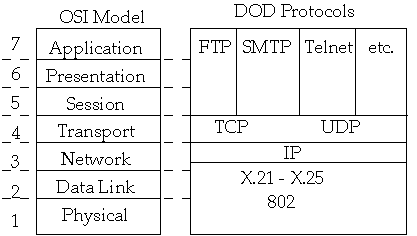
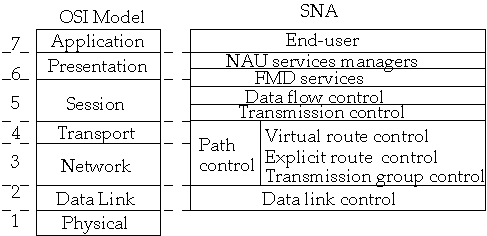
Physical
Layer
Transform
bit to signal and signal to a bit
Medium
used to transmit signal
- radio,
- twisted
pair
- coaxial
cable
- optical
fiber
Issues
- Noise
- Attenuation
- signal decreases in strength
- Dispersion
- signal changes
- Echoes
Examples
- modems
- RS-232
- V.24
Data
Link Layer
Makes
sure that a packet arrives properly between two ends of a wire
ACK
-acknowledgment of packets
Error
detection
Store
and forward
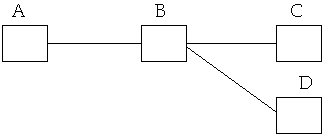
Network
Layer
Deals
with getting a packet from the source node to destination node in the network
Issues
- Routing
- Congestion
- Addresses
of physical devices

Transport
Layer
Controls
the delivery of messages between the end nodes in the network
Issues
- Divide
message into packets
- If
required reorder packet that arrive out of order
- If
required resend lost or damaged packets
- End
to end flow control

Session
Layer
Negotiates
the rules used in the session
Full
duplex or half-duplex, etc.
Presentation
Layer
Syntax
translation between computers
Byte
order
Encryption
Data
compression
Application
Layer
Whatever
the program was designed to do

Layers
Pattern
Context
A
large system that requires decomposition
Problem
Designing
a system that is primarily a mix of low- and high-level issues
Examples
of low level issues
- Reading
bits from a file
- Reading
electrical signals from a wire
- Hardware
traps
- Sensor
input
- Hardware
dependencies
Forces
Late
source code changes should not ripple through the system
Interfaces
should be stable
Parts
of the system should be exchangeable
May
build other systems with same low-level issues
Similar
responsibilities should be grouped to help understandability and maintainability
No
standard component granularity
Complex
components need further decomposition
Crossing
component boundaries may impede performance
System
will be build by a team of programmers and work has to be subdivided along
clear boundaries
Solution
Divide
system into layers
Layer
K provides services to Layer K+1
Layer
K may delegate subtasks to Layer K - 1
Layer
K interacts with only K+1 and K-1 for K = 2, 3, ..., N-1
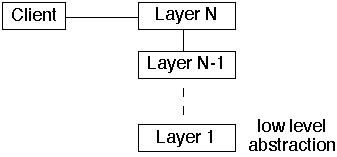
Dynamics
1.
Complete Top-Down
- Client
issues request to Layer N
- This
causes subrequests to sent to:
- Layer
N-1, then to
- Layer
N-2, then to
- Layer
N-3, etc. to
- Layer
1
-
- Layer
N then returns response to client
2.
Top-Down
- Client
issues request to Layer N
- This
causes subrequests to sent to:
- Layer
N-1, then to
- Layer
N-2, then to
- Layer
K > 1, which can satisfy all subrequests
-
- Layer
N then returns response to client
3.
Complete Bottom-Up
- Layer
1 detects some event
- Layer
1 notifies layer 2
- Layer
2 notifies layer 3
- etc.
- Layer
N notifies client
Dynamics
Continued
4.
Bottom-Up
- Same
as complete bottom-up but some layer K is able to deal with the event
5.
Communicating stacks of layers
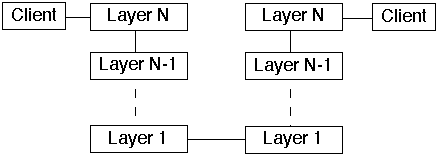
Implementation
Define
the abstraction criterion for grouping tasks into layers
Determine
the number of abstraction level
Name
the layers and assign tasks to each of them
Specify
the services
Refine
the layering
Specify
an interface for each layer
Structure
individual layers
Specify
the communication between adjacent layers
Decouple
adjacent layers
Design
an error-handling strategy
Consequences
Benefits
Reuse
of layers
Support
for standardization
Dependencies
are kept local
Exchangeability
Liabilities
Cascades
of changing behavior
Lower
efficiency
Unnecessary
work
Difficulty
on establishing the correct granularity of layers
Variants
Relaxed
layered system
- Each
layer can use the services of all layers below it
- This
may gain flexibility and/or performance but losses in maintainability
Layering
through Inheritance
- Ties
higher level to lower level
Our
View of Network Communication with TCP/IP
TCP
-
Connection-oriented
UDP
-
Connectionless
TCP
gives us a "pipe" between machines to allow us to send messages between machines
Addresses
and Names
IP
address is a 32 bit number
- 130.191.226.1
Machines
on a network need a unique IP address
Domain
Name System ( DNS
)
- rohan.sdsu.edu
| Domain Names | Meaning |
| COM | Commercial organizations |
| EDU | Educational institutions |
| GOV | Government institutions |
| MIL | Military groups |
| NET | Major network support groups |
| ORG | Organizations not list above |
| ARPA | obsolete |
| INT | International organizations |
| country codes | 2-letter code per country |
IP
addresses and names are assigned by Internic
Ports
Each
TCP/IP machine has multiple logical communication channels called ports
Ports
are numbered from 0 - 65536
A
connection between two machines is uniquely defined by:
- the
protocol (TCP or UDP)
- the
IP address of local machine
- the
port number used on the local machine
- the
IP address of remote machine
- the
port number used on the remote machine
| reserved port numbers | 1 - 1023 |
| port numbers used by system | 1024 - 5000 |
Some
Interesting Servers
| Service | Port Number |
| echo | 7 |
| discard | 9 |
| character generation | 19 |
| daytime | 13 |
| time | 37 |
| telnet | 23 |
| gopher | 70 |
| WWW | 80 |
See
RFC 1700 for a complete list for reserved ports and services they provide
Telnet
a Simple Client
On
rohan type:
- telnet
saturn 13
Or
try:
- telnet
www-rohan 80
- then
type anything followed by <CR>
Or
try:
- telnet
www-rohan 80
then
type:
-
GET / HTTP/1.0 <CR>
-
<CR>
-
<CR>
RFC's
Request
for Comments define the Internet protocols
See:
http://www.yahoo.com/Computers_and_Internet/Standards/RFCs/
http://www.cis.ohio-state.edu/hypertext/information/rfc.html
Copyright ©, All rights reserved.
1999 SDSU & Roger Whitney, 5500 Campanile Drive, San Diego, CA 92182-7700 USA.
OpenContent license defines the copyright on this document.
 visitors since 25-Jan-99
Next
visitors since 25-Jan-99
Next












